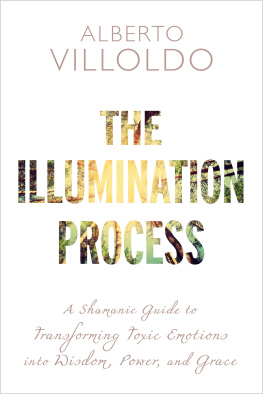Shirley Blancke - The Way of Abundance and Joy: The Shamanic Teachings of don Alberto Taxo
Here you can read online Shirley Blancke - The Way of Abundance and Joy: The Shamanic Teachings of don Alberto Taxo full text of the book (entire story) in english for free. Download pdf and epub, get meaning, cover and reviews about this ebook. year: 2021, publisher: Inner Traditions/Bear & Company, genre: Home and family. Description of the work, (preface) as well as reviews are available. Best literature library LitArk.com created for fans of good reading and offers a wide selection of genres:
Romance novel
Science fiction
Adventure
Detective
Science
History
Home and family
Prose
Art
Politics
Computer
Non-fiction
Religion
Business
Children
Humor
Choose a favorite category and find really read worthwhile books. Enjoy immersion in the world of imagination, feel the emotions of the characters or learn something new for yourself, make an fascinating discovery.

- Book:The Way of Abundance and Joy: The Shamanic Teachings of don Alberto Taxo
- Author:
- Publisher:Inner Traditions/Bear & Company
- Genre:
- Year:2021
- Rating:4 / 5
- Favourites:Add to favourites
- Your mark:
The Way of Abundance and Joy: The Shamanic Teachings of don Alberto Taxo: summary, description and annotation
We offer to read an annotation, description, summary or preface (depends on what the author of the book "The Way of Abundance and Joy: The Shamanic Teachings of don Alberto Taxo" wrote himself). If you haven't found the necessary information about the book — write in the comments, we will try to find it.
Explores don Albertos upbringing in a family of yachaks, his initiation, and his personal work to fulfill the Andean prophecy of the Eagle and the Condor
Includes reflections and essays from several of don Albertos students and others who have worked with him, including Itzhak Beery and John Perkins
Recognized as a master yachak, don Alberto Taxo was a celebrated spiritual elder, shaman, and healer of the pre-Inca Atik (Kichwa) people from the Andes Mountains of Ecuador. He shared ancient Andean shamanic wisdom and practices in the United States for more than 20 yearshis personal quest to fulfill the Andean prophecy that the Eagle and the Condor will fly together in the same sky in harmony.
Written with don Albertos permission and as further fulfillment of the Eagle-Condor prophecy, this book shares don Albertos teachings and his simple approaches for building a reciprocal relationship with nature, centered on Sumak Kausay, the way of joy and abundance. As a yachak, a shaman of the elements, don Alberto showed how to relate to and receive help from nature. When we are connected with nature on an emotional and spiritual level it creates joy that is deeply healing and can be accessed during lifes difficulties. The book discusses traditional Ecuadorian shamanic beliefs and practices, including Andean Inca cosmology; how to connect with plants, animals, air, fire, and water in sacred springs, the ocean, or your shower; and Inca concepts like Pacha, the space-time era in which we live that is now transitioning to a new one of connection and love after 500 years.
The book explores don Albertos upbringing in a family of yachaks, his initiation, and his assumption of the role of shaman for his community. It also includes reflections and essays from don Albertos students and others who have worked with him, including shamanic teachers Itzhak Beery and John Perkins, showing how he influenced their lives and awakened them to the path of Sumak Kausay, Abundant Life.
Shirley Blancke: author's other books
Who wrote The Way of Abundance and Joy: The Shamanic Teachings of don Alberto Taxo? Find out the surname, the name of the author of the book and a list of all author's works by series.











